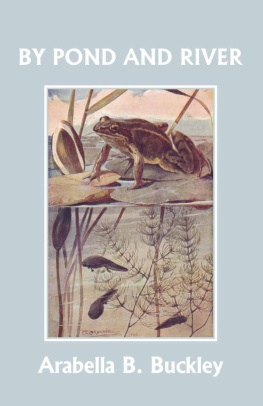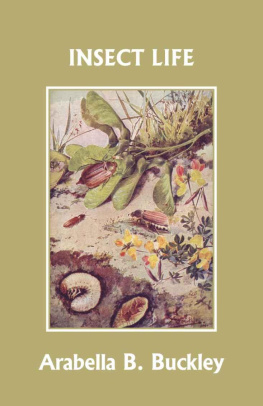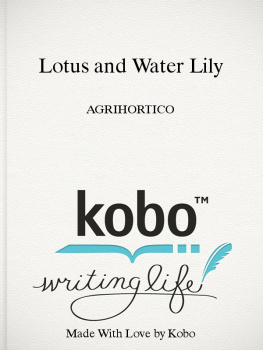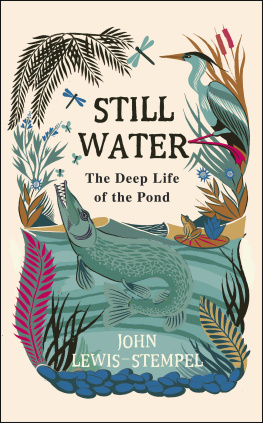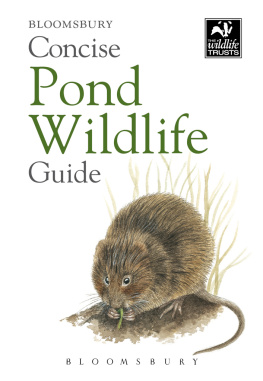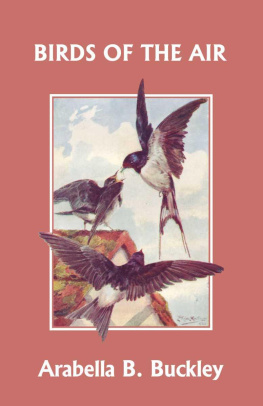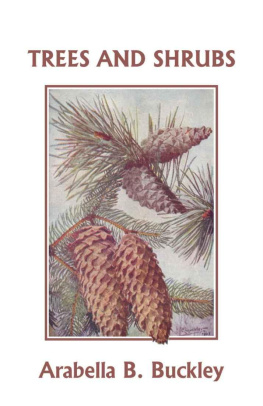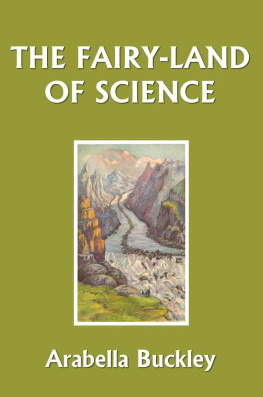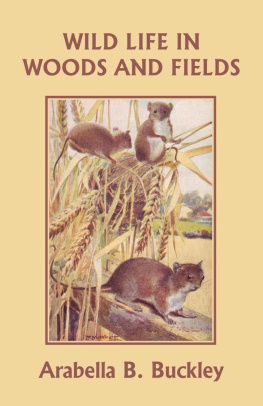By Pond and River
by
Arabella Buckley
Yesterday's Classics
Chapel Hill, North Carolina
Cover and Arrangement 2010 Yesterday's Classics, LLC
All rights reserved. No part of this book may be reproduced or retransmitted in any form or by any means without the written permission of the publisher.
This edition, first published in 2010 by Yesterday's Classics, an imprint of Yesterday's Classics, LLC, is an unabridged republication of the work originally published by Cassell and Company, Ltd. in 1901. This title is available in a print edition (ISBN 978-1-59915-272-1).
Yesterday's Classics, LLC
PO Box 3418
Chapel Hill, NC 27515
Yesterday's Classics
Yesterday's Classics republishes classic books for children from the golden age of children's literature, the era from 1880 to 1920. Many of our titles are offered in high-quality paperback editions, with text cast in modern easy-to-read type for today's readers. The illustrations from the original volumes are included except in those few cases where the quality of the original images is too low to make their reproduction feasible. Unless specified otherwise, color illustrations in the original volumes are rendered in black and white in our print editions.
Contents
CHAPTER I
A Frog's Life
C ROAK, croak, croak, we hear the frogs in the month of March. They make a great deal of noise in this month, because they are just awake from their winter's sleep, at the bottom of the pond.
The mother frogs are laying their tiny dark eggs in the water. Each egg is not bigger than a grain of sand. But it has a coat of jelly, and this jelly swells and swells in the water, till it is as large as a pea, with a little black dot in the middle. The jelly lumps all cling together. You may see them in almost any pond, driven up to the side by the wind.
Soon the dark speck lengthens. A head grows at one end, and a tail at the other. The head has a mouth, but no eyes as yet. The tail has a fin all round it, and the tadpole wriggles about in its slimy bed.
In about a week it wriggles out of the jelly, and hangs by its mouth to the weeds. Then two curious tufts grow on each side of its head. It uses these tufts to breathe, by taking air out of the water. You can see them if you dip a glass into the pond and catch a few tadpoles.
By this time the tadpole has let go of the weed and is swimming about. A sharp beak has grown on to his mouth. He uses it to tear off pieces of weed to eat. Now he grows eyes, nose-holes and flat ears. His tufts shrivel up, and a cover grows over them, so that you cannot see them. They are now like the gills of a fish. He gulps water in at his mouth and sends it out through the cover. As it passes, the gills take the air out of it, and so the tadpole breathes.
Soon two small lumps appear on each side of his body, behind the cover, just where it joins his tail. They grow larger and larger, till at last two hind legs come out. These legs grow very long and strong, and he uses them to swim. Two front legs are growing as well, but you cannot see them, because they are under the cover. In a few days these peep out, but they are short and stumpy.
Our tadpole has now four legs and a tail. He has four toes on the front feet, and five toes on the hind feet, with a skin between the toes. So his hind legs are web-footed, and this helps him to swim.
He comes to the top of the water much more often than before, and sends a bubble of air out of his mouth. What do you think has happened? The gills under his cover have closed up, and a small air-bag has grown inside him. So he comes up to breathe in the air through his mouth, instead of taking it out of the water through his gills.
Now he likes to jump on a piece of weed and sit in the shade. He does not want his tail any longer, for he can swim quite well with his legs. So his tail is slowly sucked in to feed his body.
There you have your little frog. If you look through the web of his foot at the sun, you will see that he has red blood now. But it is not warm blood like ours. He is always cold and clammy because his blood moves slowly.
He has a number of teeth in the top of his mouth, and such a curious tongue. It is tied down to the front of his mouth, and the tip, which is very sticky, lies back down his throat. He does not eat weed now. He feeds on insects and slugs. He catches them by throwing out his tongue and drawing it back very quickly.
He lives chiefly on land during the summer if he is not eaten by ducks, rats, or snakes. Then he drops to the bottom of the pond to sleep in the mud all winter.
A FROG AND TADPOLES.
CHAPTER II
The Dragon-Fly and His Companions
E VERY country boy or girl, who wants to learn about water animals, should make a pond net. You have only to get a willow twig, and bind it into a hoop with string. Then make a muslin bag and sew a small stone in the bottom of it, and sew the mouth of the bag onto the hoop. Get a stick out of the hedge and fasten to it a long piece of string. Split the string near the end, and tie it to the two sides of the hoop. Then you have a net which you can let down and fish up animals from the bottom of the pond. You had better have a wide-mouthed bottle as well in which you can put what you catch. I know a shady pond just outside a farm yard at the turn of a lane. There on a bright sunny day the insects are often very busy.
In one corner of the pond the little whirligig beetles are swimming round and round, making circles in the water. Their shining black backs look almost green in the sun. Every now and then one jumps up to catch a fly in the air, or another dives down to eat a grub. Drop your net into the water and bring it up quickly under a beetle, and put him in the bottle so that you can see him.
You will think that he has four eyes, for each of his two eyes is divided. One half looks up into the air, and one half looks down into the water. So as he whirls about, he can see the flies in the air and the grubs in the water.
Gnats are flitting to and fro over the pond, and there is quite a crowd of those large flies with gauze wings which we call May-flies. And now a more splendid fly, three inches long, with four big gauze wings rises out of the bulrushes and flies over the pond.
All boys know the dragon-fly. His lovely wings are covered with cross-bars filled with air, and they glitter in the sunshine with red, blue, and green colours. He has a long tail and a thick body with six legs, and a round head with huge eyes.
A DRAGON-FLY
Each eye has more than ten thousand tiny windows in it, so that he can see up and down, right and left, as he darts about, killing the butterflies and moths that come in his way. Then he settles down on a plant or bush by the water-side, and rests till he starts off again across the pond.
If you go often in April to a pond where dragon-flies are, you may perhaps see one begin its life in the air. This is how it happens.
Under the water a large insect crawls up the stem of a plant. He has a body as big as a dragon-fly and has six legs. But he has a curious dull look in his face, and where his wings should be there are only two short stumps.
He crawls very slowly up the stem, till he comes out of the water into the air. Then a strange thing happens. The skin of his back cracks, and out creeps a real dragon-fly.

